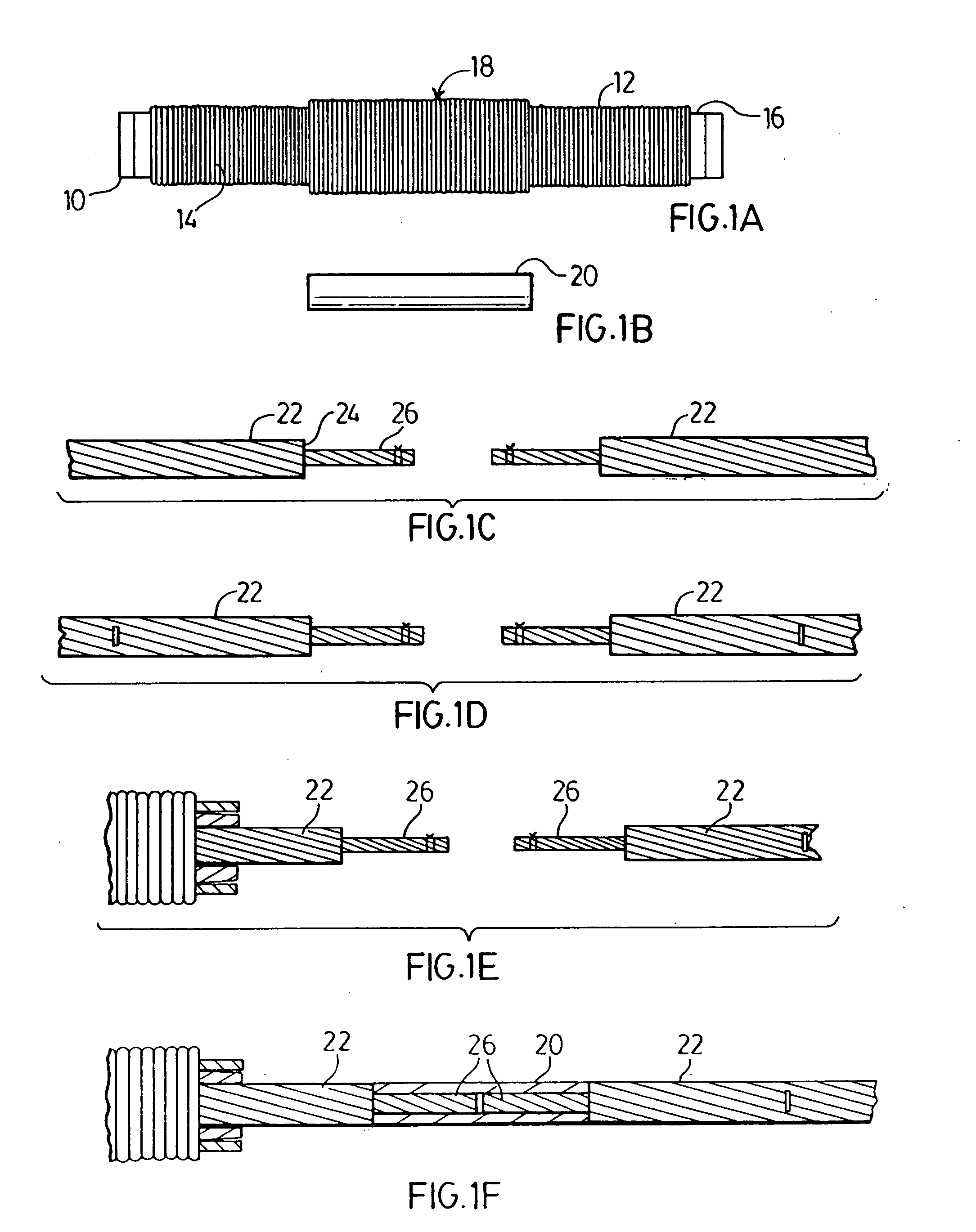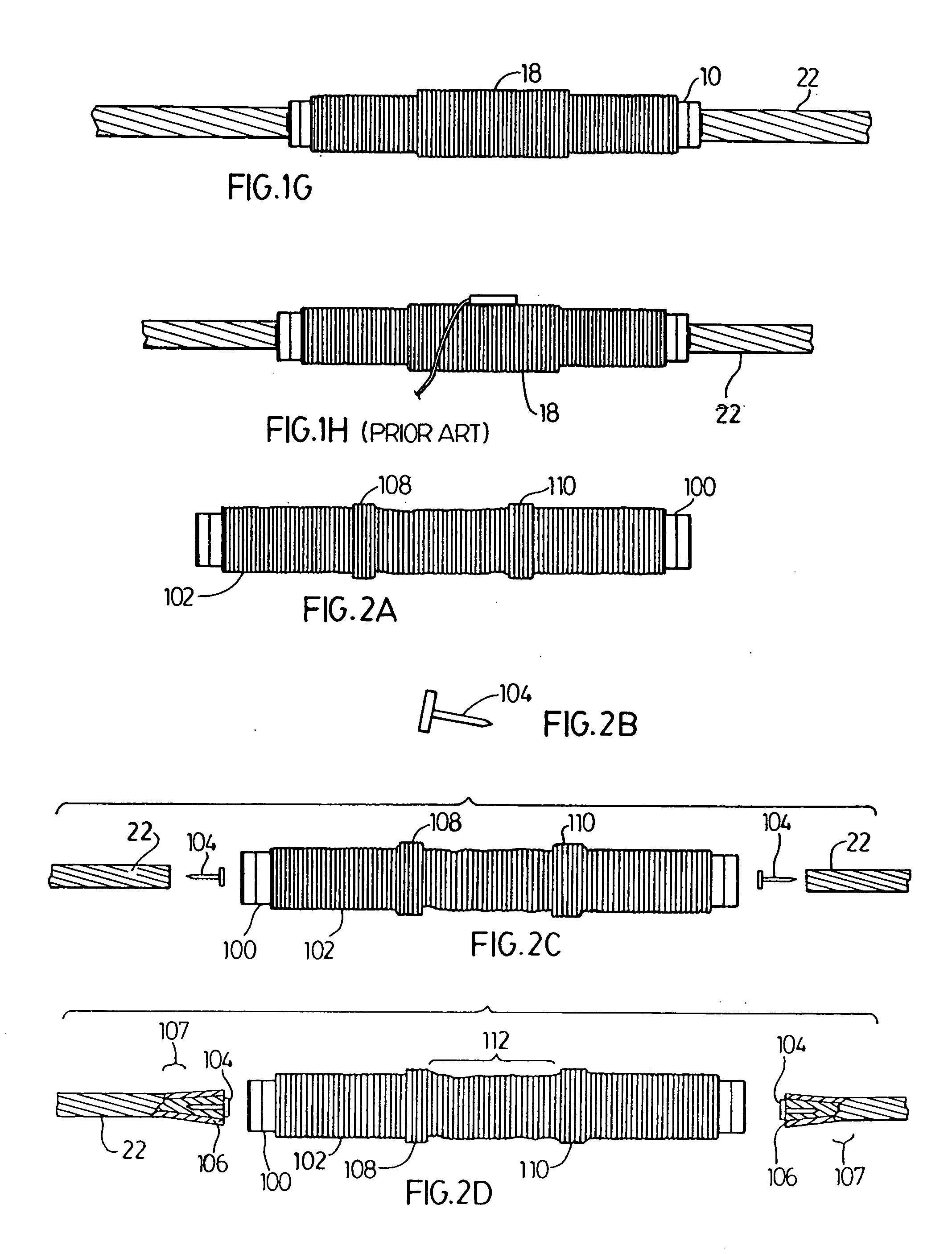Method and apparatus for joining ends of wires and the like
a technology of wire ends and wire ends, applied in the direction of cable terminations, connection contact material, manufacturing tools, etc., can solve the problems of inconvenient or impossible carrying such tools to the site, and achieve the effect of fast and easy
- Summary
- Abstract
- Description
- Claims
- Application Information
AI Technical Summary
Benefits of technology
Problems solved by technology
Method used
Image
Examples
Embodiment Construction
[0035] With reference to FIGS. 1A and 1B, a conductor splice consists of (a) an outer aluminum cylindrical sleeve (10) having a pre-mounted implosive charge layer (12) coiled around the outer surface (16) of connector (10). Layer (12) is of uniform thickness essentially the length of surface (16) except at a thicker central portion (18) (FIG. 1A); and (b) an inner steel sleeve (20) having an aluminum filter tube (not shown) on the outside (FIG. 1B).
[0036] Operational guidance as given to operators in the field follows with reference to FIGS. 1C-1H. [0037] 1. Cut conductors (22) as cleanly as possible and minimize burring or bending aluminum strands (24). Cut steel strands (26) at a distance of half the length of inner steel sleeve (20) less 0.1 in. (2-3 mm). Rewind any loose steel strands and bind securely with wire. (FIG. 1C). [0038] 2. Mark each end of conductors (22) at a distance of half the length of outer aluminum sleeve (10) less 0.1 (2-3 mm). (FIG. 1D). [0039] 3. Slide the ...
PUM
| Property | Measurement | Unit |
|---|---|---|
| diameter | aaaaa | aaaaa |
| length | aaaaa | aaaaa |
| diameter | aaaaa | aaaaa |
Abstract
Description
Claims
Application Information
 Login to View More
Login to View More - R&D
- Intellectual Property
- Life Sciences
- Materials
- Tech Scout
- Unparalleled Data Quality
- Higher Quality Content
- 60% Fewer Hallucinations
Browse by: Latest US Patents, China's latest patents, Technical Efficacy Thesaurus, Application Domain, Technology Topic, Popular Technical Reports.
© 2025 PatSnap. All rights reserved.Legal|Privacy policy|Modern Slavery Act Transparency Statement|Sitemap|About US| Contact US: help@patsnap.com



